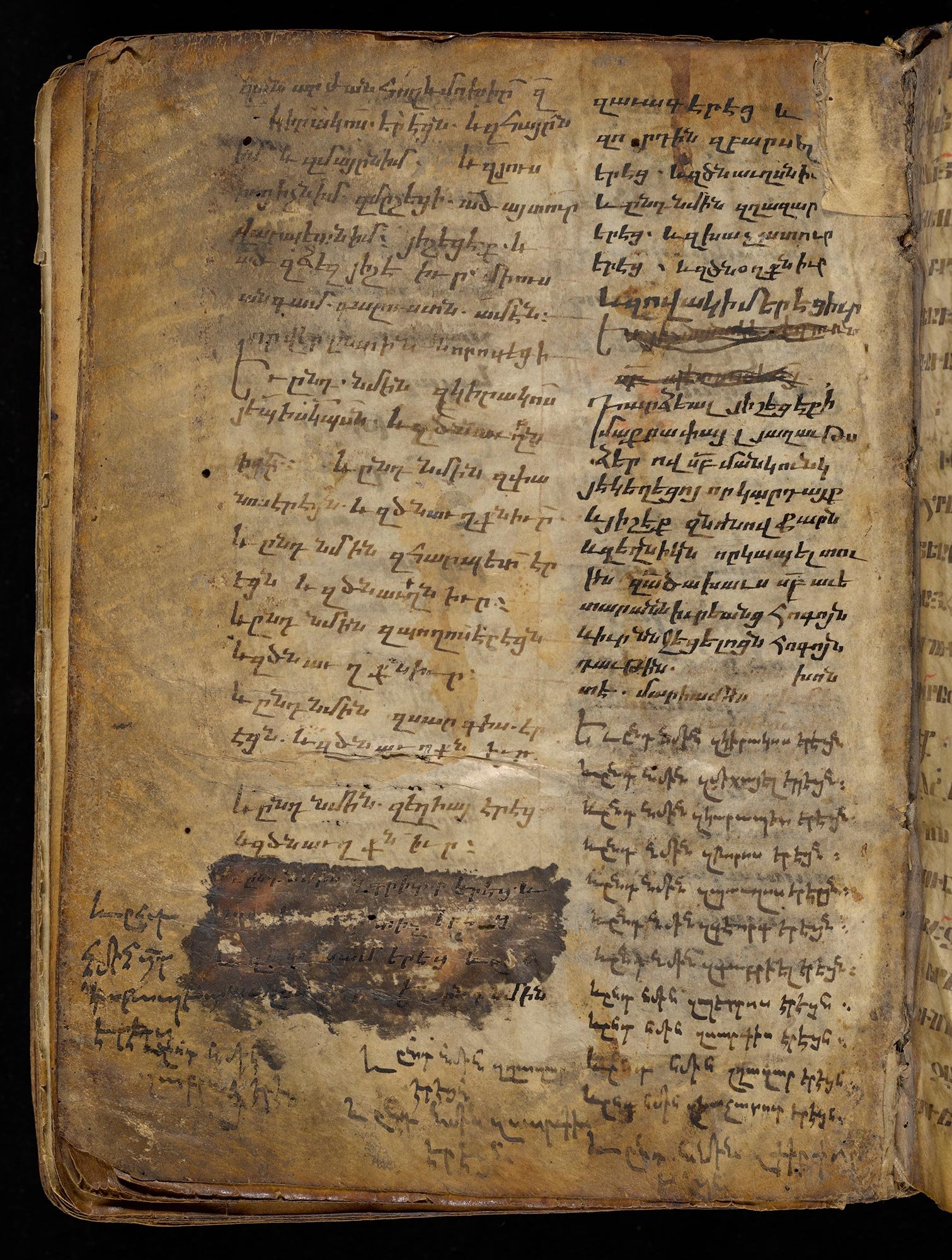Karapet Gospel, 1207
Gift of Julie Der Garabedian, 2004.150
Parchment, cover of wooden boards with dark brown leather, 10.6” x 6.5”
248 folios, bolorgir script in double columns
The Karapet Gospel is one of the most important books in our manuscript collection. The scribe Karapet completed this extraordinary work in 1207 during the reign of the Armenian King Levon I (1198-1219). Humbly referring to himself as a sinner, Karapet copied the manuscript in the Chiraka Monastery on Cilician Armenia’s Mount Tarson, noting that his vision had worsened by the time the book was completed. The Gospel was passed down for 800 years through more than 30 generations of priests from the Ter Karapetean family before finding its current resting place in the Armenian Museum.
The Karapet Gospel contains four headpieces–symbolic or decorative scenes placed above the text on the incipit, or first, page of each Gospel–illustrated with bud ornaments and interlacing patterns. The first letter of these pages takes an anthropomorphic or zoomorphic form commonly associated with one of the Evangelists: Matthew is often represented by a man or an angel, Mark by a lion, Luke by an ox, and John by an eagle.
The scribe Karapet was not the last to add to this manuscript, which records an extensive list of presbyters who inherited the book over the centuries. The Gospel also includes 20th century accounts from Karapet and Grigor Ter Karapetean, where we learn that 150 of their family members were deported from Tomarza to the desert of Deir ez-Zor in 1915. None survived. Karapet, whose military service kept him in Caesarea at the time of the Genocide, later found and purchased the Gospel in Adana. In 1927, he presented the book as a wedding gift to his nephew, Grigor, who brought the Gospel to the United States.



















